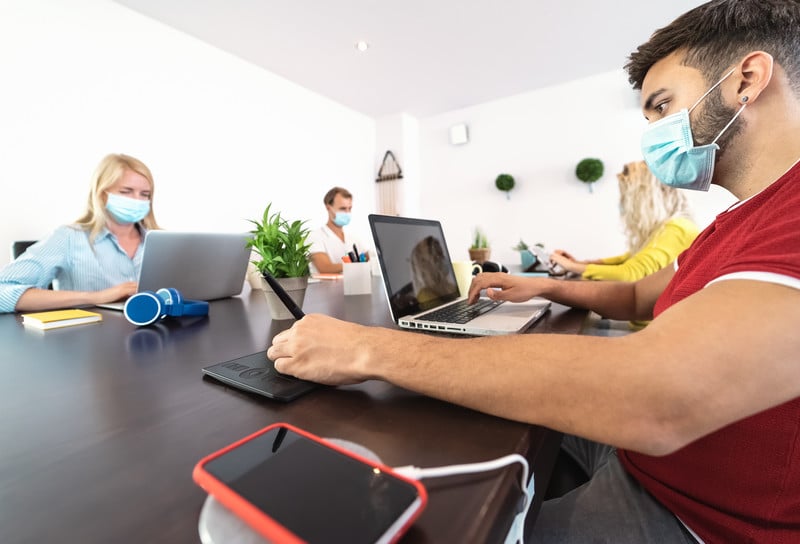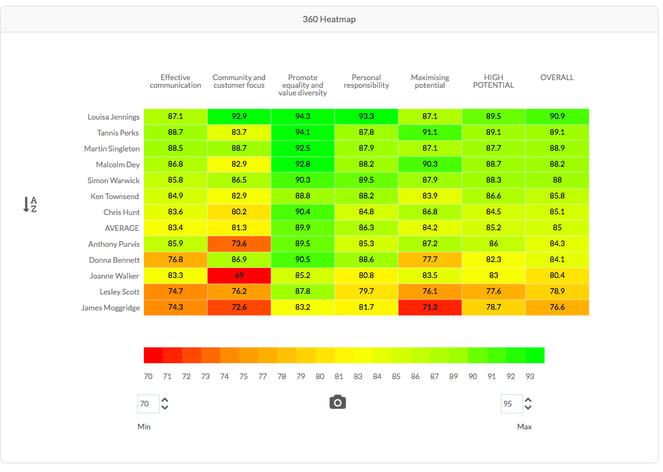How Head Light supports police forces with requirements of the NTDS
Back in January, the College of Policing announced its National Talent Development Strategy (NTDS) t...

Whether you have been effectively BAU since lockdown started, whether you and your colleagues have started a phased re-entry to your workplaces or whether you are going to be working from home for the foreseeable, it is more important than ever to be getting meaningful, insightful and useful feedback about how you're doing.
We've written before about the way that 360 can be used within teams. Traditionally very much an individual experience, we feel that 360 has many applications and more value it can add. Helping teams to understand how well communication is working within the group, how effectively people are supporting each other, identifying potential peer-matches for coaching and knowledge sharing are just some ways in which the power of 360 can be leveraged on a collective basis.
Whatever happens over the next year, we can be in no doubt that we will continue to work in a more dispersed manner than we ever did before Covid19. Even if you are a team who are frontline and less impacted by the shift in working practices, you will have fewer face to face interactions with some colleagues, partner teams, customer groups or corporate functions who have had to work from home. A sense of team cohesion, identity and belonging, collaboration, communication and inclusion are more important than ever. In this piece we consider how 360 can help us be more effective in these disrupted times.
We know that many people have joined teams or organisations, moving into a new role, either just before lockdown and therefore having very limited time to establish themselves within a team and getting to 'know the ropes', or have joined since lockdown, meaning that we have had no face-to-face contact with their colleagues at all. Establishing credibility, setting out your place in the team, building trust and fostering relationships has become all the more difficult, and the dynamics within teams are likely to have shifted significantly even for those who had their feet firmly under the table long before March 2020.
A team 360 can help teams to spot where relationships and connections need work, to help individuals understand how they are coming across to colleagues and how they are seen by their peers, enabling them to take action to achieve greater impact.

Using a 360 which has group analytics can help to pinpoint those areas which are most in need of attention and development. Refocusing your 360 on capabilities and behaviours that have become increasingly important (agile behaviours, inclusive behaviours, emotional intelligence, self-motivation, personal effectiveness and organisation skills, digital skills, etc.) will provide invaluable data on potential areas for attention, focusing your team development budget on the areas that will make the biggest difference for the most people. Tools such as Talent 360, which provide an at-a-glance way to see where shared development needs, blind spots and strengths lie, can help teams to quickly find ways to increase agility and improve remote working practices.
Moving away from the collective view, a good 360 can help you identify areas where some individuals are doing well but in which others need support. 'Matching' people on a peer-to-peer basis in this way can help both develop critical skills and behaviours, and drive better support and communication across the team.

We've all come to understand how important those water cooler and coffee point conversations actually were. How much information we gleaned over lunch breaks and lift encounters. How a quick chat with a close colleague or a "how was your weekend?" from your manager in the morning can impact the way we feel about work. When we don't have those chance interactions or opportunities to lean over to the next desk, we have had to become more planned and proactive in our communications with colleagues.
Conducting a 360 within your team, getting feedback from each other and from those on the receiving end of your communications outside the team, can give you a real insight into what's been going well and where you can hone your messaging even more effectively. Including questions on how well you are sharing information, how you keep people updated on progress, your clarity of communication and the balance between task-focused and people-centred check-ins can help bring out areas of team strength - on which you can build - and potential opportunities for improvement.
Influencing and persuading are also aspects of communication - and arguably harder to do from a distance. We might have to use different approaches to those we'd usually adopt when face to face and a team 360 can help you identify why your team might not be achieving the influence it needs at the moment, and explore ways in which you might have greater impact.

Everyone has experienced the pandemic and lockdown differently. Managers and leaders have had to plumb new depths of agility to flex their approach in order to support each individual in their team, recognising their unique challenges, circumstances and strengths. So team leaders will find it particularly helpful right now to understand how well they are showing that adaptability, particularly if we look at how well they are helping their teams transition back to a more office-based existence or whatever the new working arrangements will look like for them. But it's not just managers - we all have a responsibility to support and help our co-workers and including questions which tap into the care and interest that we are showing towards other team members, how well people are stepping in to help and cover during illness, holiday time, unplanned absence or just when pinch points occur during our work days, can help you to find ways to create a more caring and collaborative team.

If we had decided to put these areas in order of importance, this one may have been top of the list. The health and well-being implications of the last few months are likely to be top of most HR and leaders' agendas and we will likely be measuring the effects for many, many years to come. We're not suggesting that you include 360 questions about social distancing and the ability to sing whilst washing one's hands, but there are many things that we could be thinking about - and measuring - that have a tangible impact on our well-being. Many people have been working more flexibly, with varying working hours and we have all had to adapt and adjust our expectations and understanding of what's realistic and possible in line with individual circumstances.
Running a team 360 that has a focus on the behaviours and practices that we should all be adopting to support our own health, well-being and a positive work-life balance as well as what we can be doing to support others in this area might be a timely thing to do.

It is very important that we all feel connected to our workplace, to what we do and why we do it, and to others in our team. A good engagement survey will give you insight into how connected people feel, but you might need the sort of feedback collected in a 360 to really understand what people are doing - or need to do more of - to maintain team cohesion in the current climate. It's not just down to our managers and leaders - we can all play our part in how we feel about the team in which we work, and how well it functions as an entity. You could include questions that tap into behaviours that introduce an element of fun into teamwork, that get to the heart of how we are relating to and connecting to customers and clients, that focus on how we actively link what we do to values, vision and purpose. What's really important to your team? What do you stand for? What are the individual behaviours that underpin these things and how is the team currently doing against them?
Do get in touch if you'd like to instigate a 360 for any - or all - of these reasons, or if you'd like support in refreshing or repurposing your existing 360s to help create better teams moving beyond the current challenges.
Back in January, the College of Policing announced its National Talent Development Strategy (NTDS) t...
The growing external pressures on fire and rescue services are vast, with increasing operational dem...
Employee engagement is about how enthusiastic and connected people feel about where they work. It go...